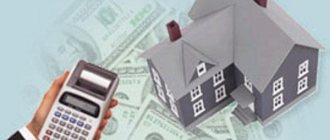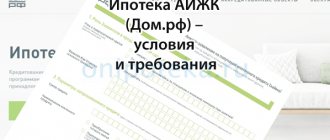The assessment is performed by experts with >5 years of experience . We have all current qualification certificates in areas (real estate, movable property, business)
We always meet project deadlines . It is important for us to show results in a short time
The price includes free support for Reports (corrections, elimination of comments)
the most polite employees communicate with you .
We bring complex projects to fruition . People turn to us in situations where other experts have failed
In a number of cases established by the legislation of the Russian Federation, it is necessary to determine the market, liquidation, investment and other value of objects. The right to perform such work is available to specialists who have membership in the SRO of appraisers, who have insured their activities, and who have passed a qualification exam in their area of activity (real estate, movable property, business).
The results of any assessment are provided in the form of a Report. The procedure for drawing up the Assessment Report, the requirements for its completion, accuracy, literacy and completeness are reflected in Law No. 135-FZ of July 29, 1998 and in FSO No. 3 of May 20, 2015 (hereinafter referred to as Standard No. 3).
Basic Principles for Compiling an Assessment Report
The following principles apply to any Report:
- The text must be understandable and not allow for the possibility of different interpretations of the information contained in it;
- All information about the cost of an object is based on official information and relies on reliable formulas;
- The presentation of data must be consistent and understandable to the customer.
Uniform legally established requirements structure the work of appraisers and make it possible to organize the information contained.
How much does the assessment procedure cost and its main features?
At the end of today’s material, our resource will present the most interesting and important features of the procedure for assessing the value of real estate.
For ease of consideration, we suggest that you familiarize yourself with the list below.
Cost of the assessment procedure
It all depends on the location and type of property being assessed. At the moment, the trend is that appraisers working in central Russia have the lowest prices; closer to the north of our country, the cost of such services is gradually increasing. As for the average cost of these, it is as follows:
- for apartments – up to 5,000 rubles;
- for private houses and dachas – 6,000-10,000 rubles.
- for commercial real estate – from 15,000 rubles;
- for land plots – from 20,000 rubles.
Reasons for conducting a real estate valuation
In our country, as a rule, there are two main reasons for carrying out such a procedure:
- The desire to sell a property and find out its true value.
- The need to show the court the true value of the property that is the subject of litigation.
For any other reasons, citizens of the Russian Federation practically do not resort to establishing the value of land or residential properties.
Expert lawyer's opinion:
Expert opinion
Gumenyuk Ekaterina Vladimirovna
Rosreestr - worked as a state registrar of rights. Head of the property department. I help solve problems that arise with real estate.
Ask a Question
A real estate appraisal report is a document with very broad capabilities. Based on the purposes of further use of the requested information, the content of the document also changes. The most common type of appraisal report is the market value of the property that is planned to be purchased using mortgage funds.
When granting a mortgage loan, banks require you to provide the requested document indicating the valuation amount for a specific property. Based on the cost of the property and the borrowers' wages, the mortgage loan amount is calculated.
The assessment report is also used when pledging existing real estate, against which it is necessary to obtain a certain amount from the bank. Due to changes in land legislation, the value of a land plot can be assessed both by cadastral value and by market value.
What information must be reflected in the Assessment Report
The list of mandatory information to be included in the final report is determined in Art. 11 of Law No. 135-FZ:
- Information about the number and date of the document;
- An indication of the reason for the assessment and its purpose;
- Data about the object (if necessary, its book value);
- Detailed information about the customer, the contractor and their independence from each other;
- An indication of the standards used and a description of the work procedure;
- Quantitative and qualitative characteristics of the property, including information about the copyright holder, existing encumbrances, degree of wear and tear, current method of use of the property and other information that has a direct impact on the formation of its value;
- Information about existing assumptions and restrictions in relation to the assessed object;
- A detailed analysis of the circumstances that influenced the final cost of the object;
- The appraiser's conclusions regarding the established value;
- Description of the results approval process;
- Listing of documents that served as the basis for determining the characteristics of the object.
For some assessment objects, additional requirements for the Report may be established that are not included in the above list.
Links to the sources from which the performer obtained specific data indicating his authorship and date of publication are reflected directly in the text. Sources may not be indicated if a copy of the document with the information provided is attached to the Report.
The appraiser is obliged to include copies of title, inventory, technical and other documents confirming the final calculations and conclusions.
Materials received from the customer (diagrams, certificates, financial documents, tables, etc.) must be signed and certified by him. The above is necessary to confirm the reliability of the data during the assessment.
It is possible to cite someone’s expert opinion as a justification for the value of an object if the obtained indicators have been analyzed in comparison with market values.
The document’s compliance with all federal requirements and SRO assessment standards allows it to be used as evidence in court proceedings.
Article 11
Federal Law of July 29, 1998 N 135-FZ “On Valuation Activities in the Russian Federation”:
Article 11. General requirements for the content of the report on the assessment of the subject of assessment
The final document drawn up based on the results of determining the value of the appraised object, regardless of the type of value determined, is the assessment report of the appraised object (hereinafter also referred to as the report).
The report is prepared on paper and (or) in the form of an electronic document in accordance with the requirements of federal valuation standards, regulatory legal acts of the authorized federal body that carries out the functions of legal regulation of valuation activities.
The report must not be ambiguous or misleading. The report must indicate the date of the assessment of the assessment object, the assessment standards used, the goals and objectives of the assessment of the assessment object, as well as other information necessary for a complete and unambiguous interpretation of the results of the assessment of the assessment object reflected in the report.
The report must indicate:
date of preparation and serial number of the report;
the basis for the appraiser’s assessment of the appraisal object;
information about the appraiser or appraisers who carried out the assessment, including last name, first name and (if any) patronymic, contact telephone number, postal address, e-mail address of the appraiser and information about the appraiser’s membership in a self-regulatory organization of appraisers;
information about the independence of the legal entity with which the appraiser entered into an employment contract, and the appraiser in accordance with the requirements of Article 16 of this Federal Law;
purpose of the assessment;
an exact description of the valuation object, and in relation to the valuation object belonging to a legal entity - details of the legal entity and, if available, the book value of this valuation object;
valuation standards for determining the value of the valuation object, a list of data used in the assessment of the valuation object, indicating the sources of their receipt, assumptions adopted when assessing the valuation object;
the sequence of determining the value of the valuation object and its final value, restrictions and limits of application of the result obtained;
date of determination of the value of the valuation object;
a list of documents used by the appraiser and establishing the quantitative and qualitative characteristics of the appraisal object.
The report may also contain other information that, in the opinion of the appraiser, is essential for the complete reflection of the method used by him to calculate the value of a particular appraisal object.
To carry out the assessment of certain types of objects of assessment, the legislation of the Russian Federation may provide for special reporting forms.
The report must be numbered page by page, bound (except when the report is prepared in the form of an electronic document), signed by the appraiser or appraisers who conducted the appraisal, and also affixed with the personal seal of the appraiser or appraisers or the seal of the legal entity with whom the appraiser or appraisers entered into an employment contract.
A report drawn up in the form of an electronic document must be signed with an enhanced qualified electronic signature in accordance with the legislation of the Russian Federation.
In cases provided for by this Federal Law, regulatory legal acts of the authorized federal body performing the functions of normative and legal regulation of appraisal activities, the report is subject to publication in the manner established by the authorized federal body exercising functions of normative and legal regulation of appraisal activities.
Return to the table of contents of the document: Law on valuation activities in the Russian Federation N 135-FZ
Consultation on services
The company's managers will be happy to answer your questions, calculate the cost of services and prepare an individual commercial offer.
Description of assessment methods and calculations performed
FSO No. 3 defines the requirements for describing the methodology of the assessment and calculations. The rules boil down to the following points:
- the Report must describe in simple language, step by step, the process of determining the cost of an object, so that the customer and other persons can understand how the specialist arrived at the result obtained;
- when choosing a certain evaluation method (cost, comparative or profitable), the contractor must justify the reasons why he took it as a basis;
- The calculations are accompanied by their description and explanations, by which it is possible to verify the results obtained.
About real estate valuation
Why is real estate value assessed?
As noted earlier, real estate valuation is an event that allows you to determine the exact value of a particular property.
This procedure is carried out by a real estate specialist who has the appropriate education as an appraiser.
You can often find one in a profiling organization that assesses the value of real estate in any city in Russia.
The procedure is divided into three main stages:
- Task formulation. At this stage, a specialist appraiser is hired, who is assigned certain tasks to carry out the procedure for establishing the value of a particular object. Depending on the formulated task, a specialist can either superficially determine the price category of a particular property or determine the most accurate cost of it, taking into account all the slightest features of the property. Naturally, the more complex and voluminous the task, the longer, better quality and for the higher fee the appraiser will work.
- Establishing the value of real estate. The appraiser himself proceeds to this stage, having received payment for his services and a clearly formulated task. The procedure for establishing the value of any real estate property is a rather complex undertaking that requires the use of special skills and knowledge. In general terms, its essence lies in a detailed analysis of the following characteristics of the object:
- Location (proximity to the city center, populated area, etc.).
- Technical equipment (availability of communications, the possibility of carrying them out, etc.).
- Reliability and quality of construction (if we are talking about the structure).
- Legal purity (no encumbrances, arrest, etc.).
- Reputation of the owner and neighbors (is the area quiet, how dangerous is it to purchase real estate there, etc.).
- Generating a report on the determination of the cost of the object. At this stage, which is the final stage in the described procedure, the appraiser generates a report on the assessment. The report, at its core, is a document containing the main provisions that were formed based on the results, namely its approximate cost, the rationality of acquiring the object, the prospects for its growth in price and other data, if necessary.
Principles of report preparation and its form
In order to ensure uniformity in the reporting developed by appraisers, the legislator has defined a number of principles on which the creation of the document should be based:
- Materiality: all information is relevant to the object, there is no unnecessary information.
- Validity: the data underlying the calculations is documented.
- Unambiguity: the conclusions are clear and do not allow for double interpretation.
- Verifiability: when reproducing calculations according to the scheme prescribed in the document, a result is obtained that is similar to the final one in the report.
- Sufficiency: the text of the reporting indicates only the information that was used in the assessment, unless otherwise specified in the law.
Sometimes third-party auditors “go too far” in terms of point 4. If, for example, a complex business is being assessed, then anyone should reproduce the calculations using the description of the Report. But these reviewers forget a simple truth: the reader of the document must initially have appropriate preparation. That is why any education system is divided into classes, levels, stages, etc.
The report is prepared in writing in paper or electronic form, has continuous numbering, a signature (simple or electronic) and the seal of the performer. Most often, at least today, the Report is prepared in paper form. But, in our opinion, with the development of automation of calculations for standard objects, all documentation will go to the clouds. By the way, today, when evaluating an apartment for Sberbank in the Dom.Click program, a printed version of the Report is required with rare exceptions.
A copy of the document must be kept during the statute of limitations for filing lawsuits in court.
FEDERAL ASSESSMENT STANDARD Requirements for the assessment report (FSO N 3)
APPROVED by order of the Ministry of Economic Development of Russia dated July 20, 2007 N 254
I. General provisions
1. This federal assessment standard has been developed taking into account international assessment standards and establishes requirements for the preparation and content of the assessment report, the information used in the assessment report, as well as the description in the assessment report of the applied methodology and calculations. An assessment report is prepared based on the results of the assessment.
2. This federal valuation standard is mandatory for use when carrying out valuation activities.
3. An appraisal report is a document drawn up in accordance with the legislation of the Russian Federation on appraisal activities, this federal appraisal standard, standards and rules for appraisal activities established by a self-regulatory organization of appraisers, a member of which is the appraiser who prepared the report intended for the appraisal customer and others interested parties (users of the appraisal report), containing the professional judgment of the appraiser regarding the value of the appraisal object, confirmed on the basis of the collected information and calculations.
II. Requirements for preparing an assessment report
4. When drawing up a valuation report, the appraiser must adhere to the following principles:
- the report must contain all information that is significant from the point of view of the value of the valuation object (principle of materiality);
- information provided in the assessment report, used or obtained as a result of calculations during the assessment, significant from the point of view of the value of the assessment object, must be confirmed (the principle of validity);
- the content of the assessment report should not mislead users of the assessment report, nor allow for ambiguous interpretation (the principle of unambiguity);
- the composition and sequence of materials presented in the assessment report and the description of the assessment process should allow the cost calculation to be completely reproduced and lead to similar results (the principle of verifiability);
- the assessment report should not contain information that is not used during the assessment to determine intermediate and final results, unless it is mandatory in accordance with the requirements of federal assessment standards and the standards and rules of assessment activities established by a self-regulatory organization, of which the appraiser who prepared the report is a member (principle sufficiency).
5. A copy of the assessment report must be kept by the appraiser from the date of preparation of the report for the general limitation period established by the legislation of the Russian Federation.
6. The assessment report must be numbered page by page, bound, signed by the appraiser or appraisers who carried out the assessment, and also affixed with the personal seal of the appraiser who carries out appraisal activities independently, engaged in private practice, or the seal and signature of the head of the legal entity with whom the appraiser or appraisers entered into an employment contract.
7. The requirements for drawing up a report on an assessment carried out for special purposes and certain types of assessment objects may supplement the requirements of this federal assessment standard and are established by the relevant federal standards for the assessment of certain types of assessment objects or assessment for special purposes.
III. Requirements for the content of the assessment report
8. Regardless of the type of assessment object, the assessment report must contain the following sections:
a) basic facts and conclusions. The main facts and conclusions section should contain:
- general information identifying the subject of assessment;
- assessment results obtained using different assessment approaches;
- the final value of the valuation object;
b) assignment for assessment in accordance with the requirements of federal assessment standards;
c) information about the customer of the assessment and the appraiser. The assessment report must contain the following information about the assessment customer and the appraiser.
Customer information:
- about the customer - legal entity: organizational and legal form; full name; main state registration number (hereinafter referred to as OGRN), date of assignment of OGRN; location;
- about the customer - an individual: last name, first name, patronymic; series and number of the identity document, date of issue and authority that issued the document.
Appraiser information:
- about an appraiser working on the basis of an employment contract: last name, first name, patronymic of the appraiser, information on membership in a self-regulatory organization of appraisers, number and date of issue of a document confirming receipt of professional knowledge in the field of appraisal activities, information about the appraiser's civil liability insurance, length of service in the appraiser activities, as well as organizational and legal form, full name, OGRN, date of assignment of OGRN; location of the legal entity with which the appraiser entered into an employment contract;
- about the appraiser who carries out appraisal activities independently, engaged in private practice: last name, first name, patronymic; series and number of the identity document, date of issue and authority that issued the specified document; information on membership in a self-regulatory organization of appraisers; number and date of issue of the document confirming the receipt of professional knowledge in the field of appraisal activities, information about the appraiser’s civil liability insurance, work experience in appraisal activities;
- information about all organizations and specialists involved in the assessment and preparation of the assessment report, indicating their qualifications and the degree of their participation in the assessment of the subject of assessment;
d) assumptions and restrictive conditions used by the appraiser when conducting the assessment;
e) applied standards of valuation activities.
The assessment report must contain information on federal assessment standards, standards and rules of assessment activities used in the assessment of the subject of assessment;
f) description of the subject of assessment with references to documents establishing the quantitative and qualitative characteristics of the subject of assessment.
The assessment report must contain the following information about the subject of assessment:
- quantitative and qualitative characteristics of the object of assessment. This information, depending on the object of evaluation, must contain, among other things, information about property rights, encumbrances associated with the object of evaluation, physical properties of the object of evaluation, wear and tear, obsolescence;
- quantitative and qualitative characteristics of the elements included in the assessment object, which have specific features that affect the results of the assessment of the assessment object;
- information about the current use of the property being assessed;
- other factors and characteristics related to the valuation object that significantly affect its value;
g) analysis of the market of the valuation object, as well as analysis of other external factors not directly related to the valuation object, but affecting its value. The market analysis section should provide information on all pricing factors used in determining the cost and contain a justification for the values or ranges of values of the pricing factors;
h) description of the process of assessing the subject of assessment in terms of the application of income, cost and comparative approaches to assessment. This section should describe the use of approaches to assessment with calculations or justify the refusal to use approaches to assess the object of assessment;
i) coordination of results. The results reconciliation section should provide a reconciliation of the calculation results obtained using different approaches.
When reconciling the results obtained when applying different approaches to assessment, as well as using different methods within the framework of applying each approach, the appraiser must provide a description of the procedure for the corresponding coordination in the assessment report. If the agreement uses weighting of the results obtained from the application of different approaches to assessment, as well as the use of different methods within the application of each approach, the appraiser must justify the choice of the weights used to assign the results obtained from the application of different approaches to assessment, as well as the use of different methods within within the framework of each approach.
9. The appendix to the assessment report must contain copies of documents used by the appraiser and establishing the quantitative and qualitative characteristics of the appraisal object, including title and title documents, as well as technical inventory documents, special examination reports and other documents on the appraisal object (if any). availability).
IV. Requirements for the description in the assessment report of information used in the assessment
10. The text of the assessment report must contain links to sources of information used in the report, allowing one to draw conclusions about the authorship of the relevant information and the date of its preparation, or copies of materials and printouts must be attached. If information, when published on a website on the Internet, is not provided with free and easy access on the date of the assessment and after the date of the assessment, or in the future, the address of the page on which the information used in the report is published may change, or information not published in the report may be used. periodical printed publication distributed on the territory of the Russian Federation, then copies of the relevant materials must be attached to the assessment report.
11. Information provided by the customer (including certificates, tables, balance sheets) must be signed by an authorized person and certified in the prescribed manner, and in this case it is considered reliable, unless the appraiser has reason to believe otherwise.
12. If expert opinion is used as information significant for the value being determined, the valuation report must analyze this value for compliance with market conditions described in the market analysis section.
V. Requirements for the description in the assessment report of the assessment methodology and calculations
13. The valuation report must contain a description of the sequence of determining the value of the valuation object, allowing the user of the valuation report, who does not have special knowledge in the field of valuation activities, to understand the logic of the valuation process and the significance of the steps taken by the appraiser to determine the value of the valuation object.
14. The assessment report must contain a justification for the choice of assessment methods used by the appraiser within the cost, comparative and income approaches.
15. The assessment report must contain a description of the calculations, calculations and explanations of the calculations, ensuring the verifiability of the conclusions and results indicated or obtained by the appraiser as part of the application of the approaches and methods used in the assessment.
16. In the assessment report, the final value of the cost, after agreeing on the results of applying assessment approaches, can be presented in rounded form according to the rounding rules.
Source https://www.labrate.ru/
Where to find a template for preparing an assessment report
When preparing a report, it is necessary to rely on the requirements listed in Law No. 135-FZ and FSO No. 3.
There is no universally approved form of the Report. Frequently practicing appraisers or organizations independently develop a sample Property Assessment Report in compliance with all the above rules and regulations.
Therefore, the reports of appraisal companies will differ in form. But the content and main idea must be respected.
This page provides templates of actual Valuation Reports that have been completed for specific purposes and approved by clients. The forms include a complete document in docx format, suitable for further editing.
How is the report prepared after the assessment procedure?
Preparation of a real estate valuation report
Despite the general mention of the formation of a report on establishing the value of real estate above, it would not be amiss to consider this stage of the procedure in more detail, since in terms of its significance it is the main one.
First of all, we note that the preparation of this document should be carried out by the person who conducted the assessment, that is, the appraiser himself. Formation of the report by third parties, assistant appraisers, secretaries or other citizens is unacceptable.
Therefore, if you notice that when assessing your property, the “expert” forces his assistant to write a report, be sure to point out to him the need for this document to be drawn up by the appraiser himself.
Otherwise, the results of the procedure will not be particularly significant and, as a rule, will not reflect the real state of affairs regarding the value of the assessed object.
As for the content of the report, everything here is also quite interesting. The fact is that the legislation of the Russian Federation determines the content of this due to the need to establish the value of real estate in the process of judicial debate.
Taking this nuance into account, checking the qualifications and professionalism of the appraiser will not be particularly difficult. In particular, to obtain a uniform opinion about the expert, it is enough to check whether he included the following points in his report:
What does a home valuation report contain?
- basic information about the property being assessed (technical data, location, etc.);
- description of the object (presence of problem areas, quality of construction, etc.);
- grounds for the actions of the appraiser (references to the service agreement, expert qualification documentation, etc.);
- review of the real estate market for similar properties in the region of the assessment (average cost of similar properties being assessed, a tendency to change the price category thereof, etc.);
- data on the methods used in the assessment process (what exactly was assessed, how, etc.);
- detailed calculation of the value of the property being assessed and its final result;
- references to the documentation used during the assessment procedure (technical documents for the property, extracts from state registers, etc.).
Remember: the fewer points presented above the appraiser included in his report, the lower his professionalism and qualification level, and, accordingly, the fewer reasons to trust him.
It is important to note that the most cunning and intelligent citizens resort to such practices as conducting several assessment procedures.
Publicity of assessment reports
In order to increase the openness of information about transactions, the law on valuation activities obliges the customer to publish certain reports on the valuation on a special resource.
The Unified Federal Register of Information on the Facts of the Activities of Legal Entities (hereinafter referred to as the Register) publishes information from reporting documentation if the assessment was carried out within the framework of the requirements of the following laws:
- No. 208-FZ dated December 26, 1995 “On JSC”;
- No. 225-FZ of December 30, 1995 “On production sharing agreements”;
- No. 41-FZ of 05/08/1996 “On production cooperatives”;
- No. 14-FZ dated 02/08/1998 “On LLC”;
- No. 75-FZ dated 05/07/1998 “On Non-State Pension Funds”;
- No. 160-FZ of 07/09/1999 “On foreign investments in the Russian Federation”;
- No. 156-FZ of November 29, 2001 “On investment funds.”
Information from the Report and the document itself are placed in the Register no later than 10 days after its adoption in the following cases:
- in case of any alienation of objects belonging to the state or municipality;
- when transferring such objects for rent, collateral or trust management;
- upon assignment of debt obligations that are closely related to a state or municipal facility;
- when seizing property for the needs of the Russian Federation, a constituent entity of the Russian Federation or a municipal entity.
Tatarova A.V. Real estate valuation and property management
Training manual. Taganrog: TRTU Publishing House, 2003.
| Previous | Table of contents | Next |
2. Real estate valuation
2.8. Property Valuation Report
Evaluation report
is a written document that meets all the requirements of professional ethics, clearly and accessiblely reflects the progress of the assessment process and contains the initial data used by the appraiser, their analysis, conclusions and the final value. The appendix to the assessment report contains all photographs, sketches and maps not included in the main sections of the report. Sometimes a glossary of terms is included in the appendix.
In addition to limiting conditions, the report may contain assumptions:
statements made by the appraiser during the appraisal process based on his professional opinion, but not supported by factual data.
Let's consider the basic requirements for the content of the appraisal report and a case study on the appraisal of a real estate property.
The assessment report on the subject of assessment must be drawn up in writing and submitted to the customer in a timely manner. The report must not be ambiguous or misleading. If it is not the market value that is determined, but other types of value, the criteria for establishing the result of the evaluation and the reasons for deviation from the possibility of determining the market value of the object of evaluation must be indicated.
According to Art. 11 of the Law “On Valuation Activities in the Russian Federation”, the valuation report indicates:
– date of preparation and serial number of the report; – the basis for the appraiser to evaluate the object of assessment;
– legal address of the appraiser and information about the license issued to him to carry out appraisal activities for this type of property; – an exact description of the valuation object, and in relation to the valuation object belonging to a legal entity, the details of the legal entity and the book value of this valuation object; – valuation standards for determining the appropriate type of value of the valuation object, justification for their use when assessing this valuation object, a list of data used in the assessment of the valuation object, indicating the sources of their receipt, as well as assumptions adopted when assessing the valuation object; – the sequence of determining the value of the valuation object and its final value, as well as the restrictions and limits of application of the result obtained; – date of determination of the value of the valuation object; – a list of documents used by the appraiser and establishing the quantitative and qualitative characteristics of the appraisal object.
The report may also contain other information that, in the opinion of the appraiser, is very important for the completeness of the reflection of the method used by him for calculating the value of a particular appraisal object.
The report is personally signed by the appraiser and certified with a seal.
If there is a dispute about the reliability of the market value or other value of the valuation object established in the report, this dispute is subject to consideration by the court.
Structure of the assessment report
Covering letter.
1. General information. 1.1. Key facts and conclusions. 1.2. Purpose of the assessment. 1.3. Rights assessed. 1.4. Certificate of quality assessment. 1.5. Qualifications of appraisers. 1.6. Assumptions and limiting conditions made.
2. Terminology used and assessment process.
3. Analysis of the object of assessment and its environment.
3.1. Description of the land plot. 3.2. Description of improvements. 3.3. General characteristics of the region. 3.4. Analysis of the city's real estate market.
4. Analysis of the best and most effective use of the assessment object (NEI).
4.1. Analysis of the NEI of the land plot as free. 4.2. Analysis of the NEI of a land plot with existing improvements.
5. Determination of the value of the valuation object.
5.1. Determination of land value. 5.2. Determining the cost of improvements:
– cost approach, – comparative approach, – income approach.
6. Coordination of results into the final cost estimate.
| Previous | Table of contents | Next |









